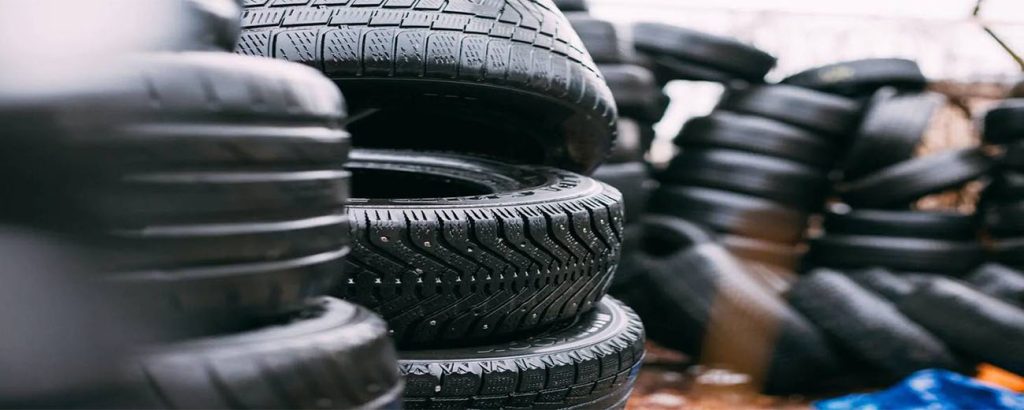- +49 (160) 95 36 60 33
- 08:00 - 17:00
- info@sapphirepetroleum.com
- Select Language
Our rubber products combine flexibility, durability, and superior performance to withstand challenging environments, making them essential for various applications.

3. Nitrile Rubber (NBR)
• Applications:
• Oil and fuel hoses.
• Seals and gaskets for automotive and industrial purposes.
• Protective gloves resistant to oils and chemicals.
• Features:
• Excellent oil and chemical resistance.
• Good mechanical strength and durability.
4. Ethylene Propylene Diene Monomer (EPDM)
• Applications:
• Roofing membranes and seals.
• Automotive weatherstripping and hoses.
• Electrical insulation.
• Features:
• Outstanding resistance to weather, heat, and ozone.
• High flexibility and durability.
5. Silicone Rubber
• Applications:
• Medical devices and food-grade seals.
• Automotive and aerospace components.
• High-temperature-resistant gaskets and insulators.
• Features:
• Exceptional thermal stability (-55°C to 300°C).
• Resistant to water, chemicals, and UV rays.
6. Butyl Rubber (IIR)
• Applications:
• Inner tubes for tires.
• Seals for pharmaceutical bottles and food containers.
• Vibration dampeners and soundproofing materials.
• Features:
• Low gas permeability.
• Good resistance to heat and aging.
7. Neoprene (CR)
• Applications:
• Wet suits and protective clothing.
• Industrial hoses and belts.
• Gaskets and seals exposed to oils and chemicals.
• Features:
• Excellent chemical and weather resistance.
• High flexibility and durability.
8. Fluoroelastomer (FKM)
• Applications:
• High-performance seals and gaskets in aerospace and automotive industries.
• Chemical processing equipment.
• Features:
• Outstanding heat and chemical resistance.
• Suitable for extreme environments.
1. Natural Rubber (NR)
• Applications:
• Tires for automobiles and bicycles.
• Industrial conveyor belts.
• Elastic components like seals and gaskets.
• Features:
• High elasticity and tensile strength.
• Excellent resilience and resistance to wear.
2. Styrene-Butadiene Rubber (SBR)
• Applications:
• Automotive tires and treads.
• Hoses and belts for industrial use.
• Footwear soles.
• Features:
• Good abrasion resistance.
• Affordable and widely used synthetic rubber.
…
Rubber is a versatile elastic material that can be natural or synthetic. Natural rubber is derived from the latex of rubber trees (Hevea brasiliensis), while synthetic rubber is produced through the polymerization of petroleum-based monomers such as styrene and butadiene.
Rubber is widely used in industries such as automotive, construction, healthcare, and consumer goods, owing to its elasticity, durability, and water resistance.
Chemical Structure:
• Natural Rubber: Composed of polyisoprene, a polymer made up of repeating isoprene (C₅H₈) units.
• Synthetic Rubber: Variants like styrene-butadiene rubber (SBR), nitrile rubber (NBR), and ethylene-propylene-diene monomer (EPDM) are tailored for specific applications.
Key Characteristics:
• Elasticity: Ability to stretch and return to its original shape.
• Resistance: Excellent resistance to water, heat, and wear.
• Durability: Long-lasting under mechanical and environmental stress.
Economic Impact:
Rubber is essential in the automotive industry for tires, belts, and hoses, making it a key driver of global trade and economic activity.
Industrial Applications:
• Automotive: Tires, gaskets, and seals.
• Construction: Flooring, waterproof membranes, and insulation.
• Healthcare: Gloves, catheters, and medical tubing.
• Consumer Goods: Footwear, elastic bands, and sports equipment.
Environmental Impact:
• Natural Rubber: Deforestation and biodiversity loss can result from rubber plantations.
• Synthetic Rubber: Its production relies on fossil fuels and generates greenhouse gases.
• Waste: Both natural and synthetic rubber are challenging to decompose, contributing to long-term environmental waste.
Sustainability Efforts:
• Recycling Initiatives: Development of methods to recycle used tires and rubber products into new materials.
• Sustainable Sourcing: Promotion of ethical and eco-friendly rubber plantations to reduce environmental degradation.
• Bio-Based Alternatives: Research into renewable sources like dandelion and guayule plants for rubber production.
Innovations in Rubber Technology:
Advancements include self-healing rubbers, enhanced heat-resistant rubbers for industrial applications, and lightweight rubbers for fuel-efficient vehicles.
Role in Emerging Technologies:
Rubber is being used in renewable energy systems (e.g., seals for wind turbines), wearable electronics, and smart materials, ensuring its adaptability in modern applications.
Rubber is an elastic material that can be natural (extracted from the latex of rubber trees) or synthetic (produced from petroleum-based monomers). Its analysis focuses on mechanical, chemical, and thermal properties to ensure performance in various applications. Key parameters include:
• Tensile Strength: 15–30 MPa for natural rubber; varies for synthetic types.
• Elongation at Break: Typically 300%–800%, indicating flexibility.
• Hardness: Measured in Shore A, usually 30–90 depending on application.
• Compression Set: Resistance to deformation under pressure.
• Thermal Stability: Natural rubber performs up to ~100°C; synthetic types can exceed 200°C.
• Abrasion Resistance: Determines wear under friction.
• Chemical Resistance: Varies significantly between types; e.g., nitrile rubber resists oils, while natural rubber does not.
Standards like ASTM D2240 (hardness), ISO 37 (tensile properties), and ISO 4649 (abrasion resistance) govern rubber testing.
Rubber production is divided into natural and synthetic sources:
Rubber is categorized into natural and synthetic types, with subcategories based on application:
• Natural Rubber (NR): High elasticity, used in tires and footwear.
• Synthetic Rubber:
• Styrene-Butadiene Rubber (SBR): General-purpose, used in tires and belts.
• Nitrile Rubber (NBR): Oil-resistant, used in seals and hoses.
• Ethylene Propylene Diene Monomer (EPDM): Weather-resistant, used in roofing and automotive seals.
• Silicone Rubber: High heat resistance, used in medical and kitchen products.
• Neoprene: Chemical-resistant, used in protective clothing and gaskets.
• Butyl Rubber: Gas impermeable, used in inner tubes and pharmaceutical stoppers.
Rubber is used across industries for its elasticity, durability, and resistance properties:
• Automotive: Tires, seals, hoses, and engine mounts.
• Construction: Roofing membranes, expansion joints, and insulation.
• Consumer Goods: Footwear, rubber bands, and sports equipment.
• Healthcare: Gloves, syringes, and medical tubing.
• Industrial Applications: Conveyor belts, gaskets, and vibration dampers.
• Aerospace: Seals and gaskets for aircraft components

SAPPHIRE PETROLEUM COMPANY
© 2024 All Rights Reserved | Powered by Netologist
Reviews
There are no reviews yet.